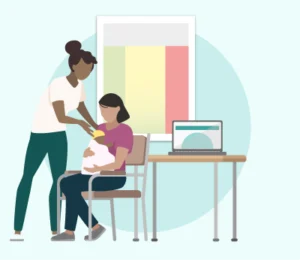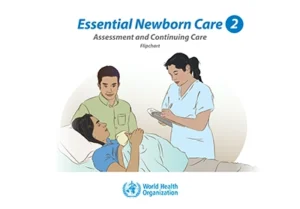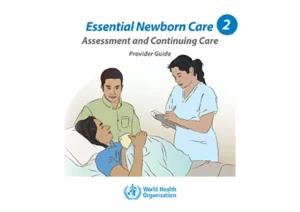Essential Newborn Care 2
Provide better care to newborns after the first 60 minutes of life.
Introduction
ENC 2 is the second part of WHO’s Essential Newborn Care Course. It incorporates the content in earlier programs by AAP — Essential Care for Every Baby (ECEB) and Essential Care for Small Babies (ECSB), updated to align with WHO recommendations and guidelines. Learn about the key updates from ECEB and ESSB to ENC 2 in the Summary of Changes.
Learning objectives
- Prevent infection
- Provide respectful care
- Record and use data
- Assessment, Prevention, Classification
- Provide routine continuing care in the facility
- Provide intermediate continuing care in the facility (low weight, low temperature, feeding difficulty)
- Provide advanced continuing care in the facility (Danger Signs, referral)
Duration
Two continuous days, or 5-8 shorter sessions
Facilitator-to-participant ratio
Groups: 1 facilitator for every group of 6 participants. The participants will practice in pairs.
Learning materials
Download and preview the materials you will need. You should also have printed materials during a training. You can order printed materials from Laerdal, or download the printing files free of charge to print locally. To calculate how many copies you need, keep in mind that there should be one facilitator for every group of six participants.
These materials are copywrited and should not be altered. Contact us for inquiries about translations and adaptations.
Action Plan
A poster showing the steps to take during care, to use both during training and as a job aid for clinical practice.
1 per group (facilitator + 6 participants), and enough to leave at each facility to be used in clinical care.
Select an option
- Action PlanEnglish
- Action PlanSpanish

ENC 2 Online
Online tool for facilitation of the training. It includes demonstrations videos, prompts for discussion, and practice sessions.
- ENC 2 OnlineEnglish

Flip Chart
Paper-based facilitation tool, with guidance for facilitators to demonstrate, lead discussions and support practice.
1 per group (facilitator + 6 participants)
Select an option
- Flip ChartEnglish
- AnnexEnglish

Provider Guide
A booklet for every healthcare worker to use during the training and keep afterwards. For reviewing content and practicing skills overtime.
1 per participant
- Provider GuideEnglish

Simulation Practice Cards
Cards with different scenarios to practice in teams, during and after the training.
1 per participant
- Simulation Practice CardsEnglish

Videos
-
Assessment and preventing disease
-
Routine care
-
Intermediate care
-
Advanced care
Assessments
As part of the learning process, every training program includes assessments for the participants. You can download and print the assessments.
Looking for online LIFT assessments? Visit laerdal-lift.com
Equipment
Every pair of participants will need these items to practice during the training. The equipment should also be available for practice in the facilities after the training.
- 1 Newborn simulator with ventilation option — we suggest NeoNatalie
- 1 Small newborn simulator with NGT option — we suggest PreemieNatalie
- 1 Breast simulator — we suggest MamaBreast
- 1 Pen and paper
- 2 Gloves
- 1 Clock
- 1 Baby hat or cap
- 2 Cloths, dry and clean
- 2 Cord ties/clamps
- 1 Stethoscope
- 1 Ventilation bag and mask
- 1 Suction device
- 1 Scissors
- 1 Thermometer
- 1 Syringe
- Hand cleaner
- Optional: Videos and projector or computer
If you are facilitating remotely
- Tablet or computer with camera and microphone